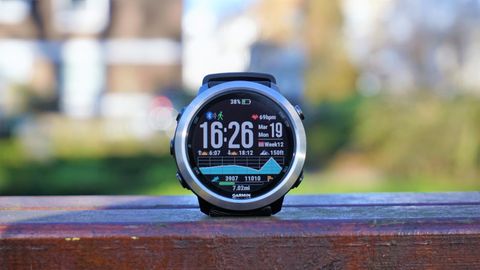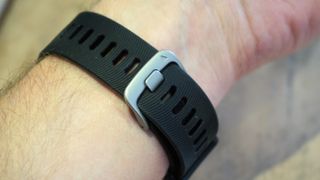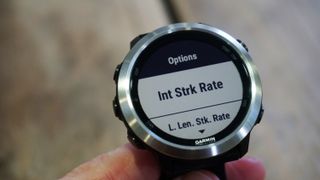
The Garmin Forerunner 645 Music is the watch that’s designed to fix the brand’s biggest flaw with its running trackers: the lack of entertainment.
But with the likes of the Apple Watch 3 and Samsung Gear Sport encroaching on this space, bringing both GPS tracking and the ability to stream music to a Bluetooth headset, Garmin needed to catch up.
And finally, it’s begun that journey, adding in the capability to listen to tunes, audiobooks or podcasts on the go, as well as being able to pay contactlessly from your wrist (although that feature's not supported by a huge number of banks yet). But it’s not going to be cheap...
Garmin Forerunner 645 Music price and release date

Here’s the thing that will probably stop many in their tracks: the Garmin Forerunner 645 Music is going to cost around £399 / $399 (around AU$520) - which is a lot of any kind of running watch.
You can get a model without music for £350 / $350 (around AU$440) - but that would really strip it of the main USP.
While you’re paying for some impressive features, it’s also worth noting that TomTom has been offering running watches with music playback capabilities for years, and for a much lower price. However, with these likely to be slowly coming off sale in the coming months, there’s an opportunity for Garmin to jump in.
The Forerunner 645 Music is already available, with the release date landing in February 2018.
Music
- Streaming music isn't supported yet
- Can put on MP3s and audiobooks from your PC

Right, let’s get into the groove here - music is the main reason Garmin fans will be buying this watch. And we’re here to tell you that the experience is disappointing for a running watch in 2018.
The Forerunner 645 Music got the right bits to be a great little entertainer on the go: 4GB of internal storage should carry 500 songs with you, and deals with iHeartRadio and Deezer will give you access to reams of tunes.
But those two services don’t yet have the requisite apps on the Garmin ConnectIQ store, which means you can’t transfer any streamed music onto your watch. Which is pretty terrible given the main reason you’d buy this device is to have access to millions of songs - and Garmin doesn't know when it's coming.
So you’re left with putting your own MP3s on there, and if you’re still someone that’s got a vast digital music collection, you’ll be fine.
The downside comes when you find out what you’ve got to do to actually get them on there - fire up your computer, open up Garmin Express (which most won’t have ever done, given they’ll have only ever paired with the app) and then search for the songs on your machine, before getting them sent to the watch.

While audiobooks and podcasts are supported, there’s no way that most people would bother putting them on the watch through the PC. It’s just so, so much easier to listen to them from the phone that we would rather just bring our handset with us - and to be honest, we feel the same about listening to streamed music... it's just so much easier on the phone.
Advertisement
But if you do go down the route of putting music on your Garmin Forerunner 645, the experience is fine. It’s nothing special, and precisely the same as you’re used to on something like the TomTom Runner or most smartwatches on the market - choose from albums, playlists or shuffling all songs.
It’s quite tough to get used to the nuances of the interface by moving up and down and pressing enter, but it’s understandable enough after a while. The main thing is being able to easily change your tracks while running, and that’s possible here.
If you want to change album or playlist on the go it’s quite a few presses, but actually having a physical button is easier than trying to do this with a touchscreen when sprinting around.
The music playback is supposed to be a massive feature of this watch, but not having Spotify was already a hindrance… not having any music streaming services ready at launch is terrible.
Design and screen
- Lightweight design
- Lovely look
- Large screen

One of the most striking things about the Forerunner 645 Music is the way it’s designed - apart from some of the hyper-expensive fashion-led Fenix models, it’s the most attractive Garmin watch out there.
The impressive feature is the metal rim around the edge of the 1.2-inch display - it not only protects the Gorilla Glass 3 that covers the display, but adds a more industrial, yet stylish, look to the watch.
The other thing is that feels really light in the hand and on the wrist - at 42.2g it’s much lighter than the Garmin Forerunner 935, for instance, and puts it more in line with the Forerunner 735XT.

That loss of weight is partly to do with the smaller battery though, and as you’ll see later that comes at a cost to the function of the watch.
The strap is silicone and also pretty lightweight - it feels comfortable on the wrist, although those with sensitive skin might need to swap it out. Thankfully you can use any 20mm strap here, thanks to the standard lugs.
The screen, like many Garmin running watches, is transflective technology, which makes it clear and bright in most scenarios when light is shining directly on it, meaning it catches even a small amount of photons pretty well to help you see what’s on the display.
If you’re in the dark there’s an illuminating light, and Garmin has done pretty well with the accelerometer to make the watch light up whenever you raise your wrist - to do this on a run is pretty advanced.

The screen itself is very clear, and a had a nice degree of sharpness. It’s not in the same league as many modern smartwatches, granted, but it’s more than good enough in day to day use and we never were unable to see the numbers when out on a run.
And really, that’s all that matters. The rounded display can make things a bitcongested when you’ve got four different bits of data on one screen, but even then it’s easy to make out what’s being shown.
The only slight downside is that colors are a little muted, but that’s the price paid for the transflective technology.


Aucun commentaire:
Enregistrer un commentaire